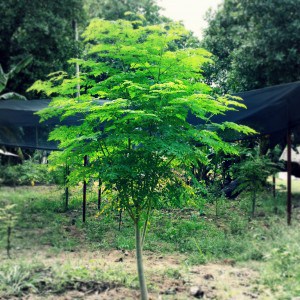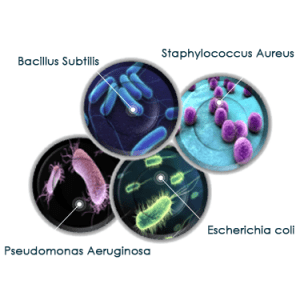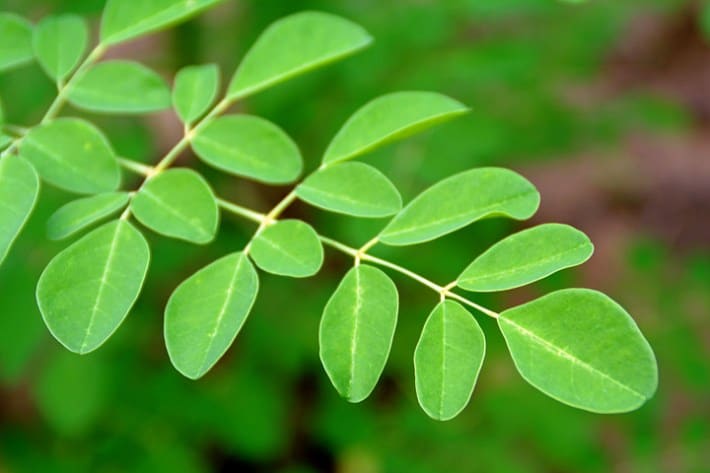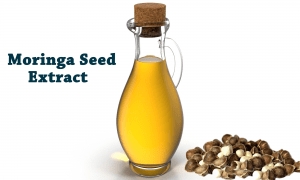Moringa Oleifera – Medicinal Properties of Moringa Oleifera
Moringa Oleifera – A Promising Healer Study
 Moringa oleifera is a small tree with about 5 to 10 meter height. Due to the Moringa’s multiple utilities, the tree is cultivated all over the world. In fact, all the parts of Moringa Oleifera are used for significant medicinal and/or nutritional benefits and uses. The tree is a great source of vitamins, protein, fatty acids, micro-macro minerals, oils, and various types of phenolics and well-known for antimicrobial, anti-inflammatory, anticancer, antioxidant, hepatoprotective, cardiovascular, diuretic, anti-ulcer, antihelmintic, and antiurolithiatic. Moringa’s multiple pharmaceutical uses and effects are capitalized as a remedy (therapeutic) for different diseases in traditional system of medicine.
Moringa oleifera is a small tree with about 5 to 10 meter height. Due to the Moringa’s multiple utilities, the tree is cultivated all over the world. In fact, all the parts of Moringa Oleifera are used for significant medicinal and/or nutritional benefits and uses. The tree is a great source of vitamins, protein, fatty acids, micro-macro minerals, oils, and various types of phenolics and well-known for antimicrobial, anti-inflammatory, anticancer, antioxidant, hepatoprotective, cardiovascular, diuretic, anti-ulcer, antihelmintic, and antiurolithiatic. Moringa’s multiple pharmaceutical uses and effects are capitalized as a remedy (therapeutic) for different diseases in traditional system of medicine.
This is a charismatic healer and further research on Moringa may lead to superior success of this tree for different types of diseases. The study provides an overview (brief) about Moringa’s medicinal potential and the future as a modern medicinal system component. This study also shows that Moringa oleifera needs appraisal (legitimate) for the pharmaceutical establishment in the modern medicinal industry.
Moringa has a huge medicinal potential and possibility, which has been recognized in the Unani and Ayurvedic system (Mughal et al., 1999). Almost all the parts of this tree, including bark, root, leaf, gum, pods (fruit), seed, seed oil and flowers have been used in the indigenous medicine for various ailments (Odebiyi and Sofowora, 1999), and contemporary research shows its applicability and importance in the modern medicine. Quite a few issues are described in the article.
Moringa Oleifera Benefits Antihelmintic and Antimicrobial Activity
Moringa Antimicrobial components have been proved after inhibitory activity discovery against different kinds of microorganisms. Moringa aqueous extracts were found inhibitory against most pathogenic bacteria in a recent study, including  Bacillus subtilis, Staphylococcus aureus, Pseudomonas aeruginosa, and Escherichia coli in dependent manner (dose) (Abu Zaid and Saadabi, 2011). Moringa Oleifera extracts were proved inhibitory against B. subtilis and Mycobacterium phlei (Eilert et al., 1981). The Moringa leaf extract was found to be highly effective in checking the excessive growth of Basidiobolus ranarums and Basidiobolus haptosporus (Okafor and Nwosu, 1995).
Bacillus subtilis, Staphylococcus aureus, Pseudomonas aeruginosa, and Escherichia coli in dependent manner (dose) (Abu Zaid and Saadabi, 2011). Moringa Oleifera extracts were proved inhibitory against B. subtilis and Mycobacterium phlei (Eilert et al., 1981). The Moringa leaf extract was found to be highly effective in checking the excessive growth of Basidiobolus ranarums and Basidiobolus haptosporus (Okafor and Nwosu, 1995).
A different study involving fixed oil and aqueous methanolic extract against microorganisms was completed using green algae (Scenedesmus obliquus), P. aeruginosa ATCC10145, E. coli ATCC 13706, bacterial strains (Bacillus stearothermophilus), S. aureus NAMRU 3 25923, sabin vaccine (Polio virus type 1) and HSV 1 (Herpes Simplex virus type). Antimicrobial activity in varying degree was found ranging from resistant for P. aeruginosa to sensitive for B. stearothermophilus (Ali et al., 2004). Moringa oil also possess anti-fungal activity beside the antibacterial activity (Chuang et al., 2007).
A recent study compares antimicrobial activity (relative) of seed extracts against harmful bacteria (E. coli, Pasturella multocida, S. aureus and B. subtilis) and fungi (Rhizopus solani and Fusarium solani) disclosed that B. subtilis and P. multocida were quite sensitive strains and cations influenced their activity (Mg, K, Na, Ca2+) (Jabeen et al., 2008).
Similar collation of antifungal and antibacterial efficacy of Moringa Oleifera steam distillate noticed higher inhibition for an effective E. coli followed by Klebsiella pneumoniae, S. aureus, B. subtilis and P. aeruginosa. Aspergillus niger was powerfully inhibited in the case of fungi followed by Aspergillus terreus, Aspergillus nidulans, and Aspergillus oryzae (Prashith Kekuda et al., 2010). In other studies, opposite to protection against Candida albicans and P. aeruginosa for Moringa and further study using the ethanolic extract of flowers, seeds and leaves showed the activity (antimicrobial) against K. pneumoniae, E. coli, Proteus mirabilis, Enterobacter species, Salmonella typhi A, S. aureus, P. aeruginosa, Candida albicans and Streptococcus (Nepolean et al., 2009).
Moringa is enriched with pterygospermin which has powerful fungicidal and antibacterial effects (found in Moringa pterygosperma) (Rao et al., 1946). Moringa has been reported with different types of antibacterial activity with other specific components, including 4-(a-L-rhamnopyranosyloxy) benzyl isothiocyanate, 4- (4′-O-acetyl-a-L-rhamnopyranosyloxy) benzyl isothiocyanate, 4- (a-L-rhamnopyranosyloxy) benzyl glucosinolate and benzyl isothiocyanate (Fahey, 2005).
Some other bioactive compounds, such as Anthonine and Spirochin are found in its root and are very active against different kinds of bacteria. At the same time, Anthonine has significant inhibitory activity against Vibrio cholerae (1995, Nwosu and Okafor). Moringa leaves and flower are capable of controlling parasitic worms, and several studies demonstrate antihelmintic activity (Bhattacharya et al., 1982). In addition, MO leaves ethanolic extracts inhibit Indian earthworm Pheritima posthuma (Rastogi et al., 2009).





What can you do for breast cancer that has spread to the liver and bones.